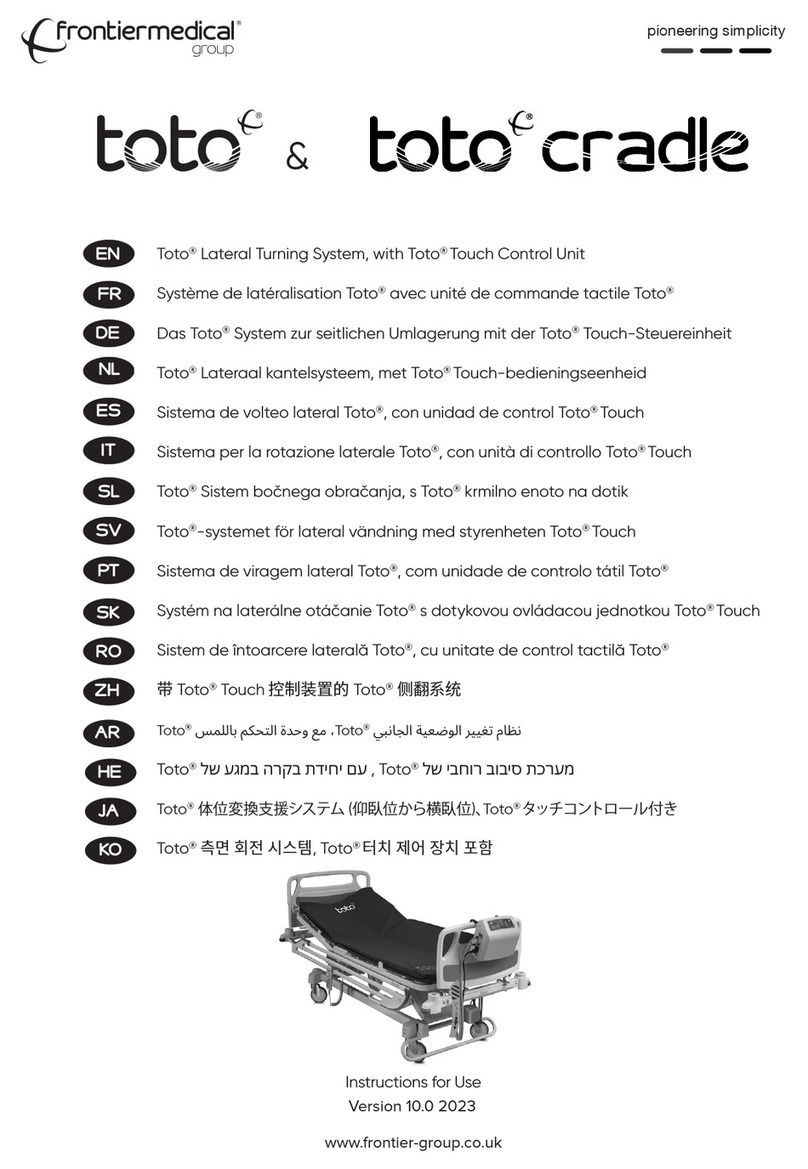SERVICE AND REPAIR PROCEDURES
Toto® Plaorm & Control Unit (110V)
9Version 1 - August 2019
1. Prepare the Control Unit
Switch o the power supply to
the control unit, disconnect the
air hoses and remove the power
cord from the electrical socket in
the side of the unit.
Using a so cloth to protect the
unit from damage, place the
control unit on a level work
surface with the back facing
upwards.
2. Remove the Tamper Proof
Label
Using a heat gun (80°C / 176°f),
remove and discard the tamper-
proof label.
3. Remove Screws
Remove white screw caps.
Use a Phillips Head Screwdriver
to remove the seven screws that
secure the housing.
Place the screws in a safe place
(such as small container or jar)
to prevent loss.
4. Separate the Housing
Gently loosen the top and
boom housing. Once loose,
hold the power socket (IEC
connector) to prevent from
catching while liing the top
cover and leaning it back on your
work surface.
Be careful not to drag the
internal wires and tubing during
this process.
5. Disconnect the PCB (i)
Disconnect the six electronic
leads by cung the cable es
that secure the leads to the PCB.
Carefully pull away the plasc
cases (not the wiring) to
disconnect.
6. Disconnect the PCB (ii)
Disconnect the two remaining
at digital leads and one air
tube.
Be sure to note the locaon of
all eight connecons on the
circuit board for easy
replacement.
Leave the disconnected PCB in
the control unit during tesng.
TESTING FOR A FAULTY PCB (PRINTED CIRCUIT BOARD) AND ‘PIGGYBACKING’ A WORKING SPARE
To determine if the PCB has failed, always test the Control unit using a working spare. When handling the PCB, an-stac gloves (or
other an-stac precauons) should be used to protect the PCB from stac.
Required Tools:
Phillips Screwdriver
Wire Clippers
Heat Gun
Required Parts:
1x 110V PCB Assembly
REF - 010323
































